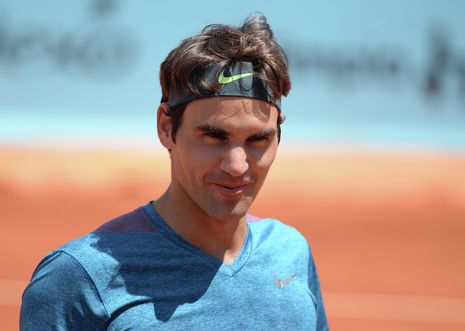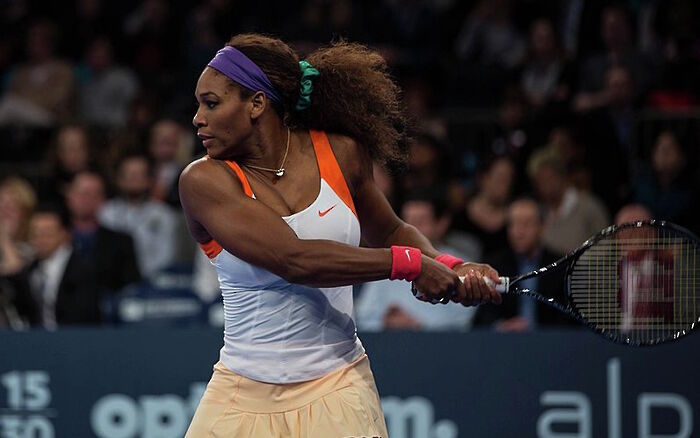“Now is the time to unite the men’s and women’s tennis tours”
Taking professional squash as a model, Damola Odeyemi explains how an ATP-WTA merger would be beneficial for all.

In April of 2020, when lockdowns were coming into effect all around the world and the tennis season was put on hold, Roger Federer posted a tweet calling for a merger between the male and female tennis governing bodies.
“Just wondering… am I the only one thinking that now is the time for men’s and women’s tennis to be united and come together as one?”
Federer’s tweet was met with much support from fellow high-profile players on both tours. His suggestion is certainly not new, but with his platform and influence, he has reignited the fire and brought this conversation to the forefront of people’s minds. In 1973, Billie Jean King, along with 8 other women, set up the Women’s Tennis Association as organisation representing the women’s game after her proposition of a joint jour was rejected by the ATP. For nearly 50 years, she has not stopped pushing for unification and finally the movement is picking up speed. However, as with most things of this scale, the determining factor is money.
An ATP-WTA merger would not be the first of its kind. In January 2015, the men’s and women’s squash associations merged to form one joint Professional Squash Association, PSA. The historic merger is seen as the biggest boost to the sport in the last decade. This unification was driven by women, who planned to act upon the clear disparity between the two tours. Men were making twice as much as the women in both prize money and sponsorships, allowing the men’s association to thus make greater investments in marketing strategies. In addition, the single online broadcasting platform, SquashTV, only showed men’s squash. The women’s game was simply not being seen.
“The ATP should fear for its future, for the future is the women’s game.”
There were doubts from both sides about the merger. Some in the men’s association felt that unification might halt the growth and success of the men’s game. Others on the women’s side worried that, if handled incorrectly, a merger could end up looking more like a takeover, where the men’s tour ‘owns’ the women’s tour.
These doubts were put to rest, however, within a few years of the tours merging. The PSA’s revenue has increased by over 70% since then. The tour was able to sell larger, unified media packages. More squash was being brought to more eyes; the sport exploded in popularity. The women’s game has doubled in followers since 2015, now reaching over 3 million viewers. Men and women are on an equal footing; the prize money for all tournaments is equal and they perform on the same global stages.
The main difference between tennis and squash before 2015 was the state of the women’s game; the WTA is a highly successful organisation in its own right. It is the largest and most profitable association for women’s sport. The top 9 highest earning female athletes in the world are tennis players - unsurprising given that the winner of the 2019 WTA finals in Shenzhen, Ashleigh Barty, took home a total of 4.42 million dollars in prize money.
“The Big Three are in their twilight years and the ATP risks losing viewership when they decide to lay down their rackets for good.”
While the ATP and the WTA act fairly independently, their business model is ultimately the same. Despite separately organised tournaments, the two tours come together for the biggest stages, the Grand Slams. Here, the two associations are ultimately competing against each other in the same market.
This is where tennis can follow in the example set by the PSA. At the moment, most ATP and WTA tour-level matches are not broadcast on UK televisions. Much like SquashTV before 2015, the ATP has its own online streaming platform, TennisTV, and Amazon Prime has the rights to WTA and some ATP tournaments. If the WTA and the ATP were to merge, these can all be packaged into a singular slick product.
The audience for both tours is effectively the same – that is, most followers of tennis follow both sides of the sport. A joint tour would see financial benefits in being able to sell significantly larger media packages. If a unified tour presents a more appealing product to a greater number of consumers, more sponsors will want to get involved. This injection of funds will trickle down to the players’ pockets in the form of increased prize money.
With all this evidence indicating the financial benefits of a merger, it is almost more surprising that it hasn’t happened yet, given the success of the PSA. Representatives of the ATP have historically avoided discussion on the matter. Chris Kermode, the previous head of the ATP, refused to explore the possibilities in his six-year tenure. His successor, Andrea Gaudenzi, who took over last year, has stated that he is open to talks about greater cooperation and joint events with the WTA. This is certainly encouraging, but there is currently little evidence of increased cooperation.
“The years following their retirements arguably present greater financial uncertainties than that of a merger.”
The ATP is the wealthier of the two tours. It owes much of its prosperity to what seemed like an almost constant production of superstars and riveting rivalries. As viewers, we have been spoiled with the likes of John McEnroe and Bjorn Borg, but nothing matches up to the modern-day rivalries of Roger Federer, Rafael Nadal and Novak Djokovic, whose influence as the Big Three completely transcends the sport. The ATP’s reliance on these stars to grow the sport and generate revenue could prove to be costly in the long term.
The next tennis superstars are not in the men’s game. The Big Three will soon retire, having dominated the sport for over 15 years. The group labelled as the Next Gen do not match the quality on and off the court that the Big Three continue to show and do not galvanise audiences to the same extent. This is evidenced by TV viewing figures. The 2020 US Open final involving Zverev and Thiem had 1.4 million viewers in the US, half of the same final the year before, involving Nadal and Medvedev. Djokovic’s 2019 Wimbledon final win over Federer peaked at a whopping 9.6 million TV viewers in the UK alone. The Big Three are in their twilight years and the ATP risks losing viewership and thus revenue, when they decide to lay down their rackets for good. The ATP should fear for its future, for the future is the women’s game.
Women’s tennis, however, is on the verge of blowing up. Serena Williams, arguably the greatest and most popular female tennis player ever, has reached celebrity status, and is still playing at the absolute highest level. The players coming up are managing to draw the spotlight away from her. Naomi Osaka, a 23-year-old with three Grand Slams to her name, has carved a path outside of tennis as an influential civil rights activist. Other upcoming stars, Simona Halep, Bianca Andreescu, and Iga Światek, have brought new audiences to women’s tennis. The women’s game is more competitive, less predictable, and more accommodating to younger players. These emerging talents are greater assets for the growth the sport than their male counterparts.
The men’s tour is still going strong as the Big Three continue to dominate, but for how much longer? The years following their retirements arguably present greater financial uncertainties than that of a merger. Men’s tennis cannot continue to put off the inevitable. Roger Federer was right in his tweet: he’s definitely not the only one wondering. Now is very much the time for men’s and women’s tennis to unite.
 News / Caius mourns its tree-mendous loss23 December 2025
News / Caius mourns its tree-mendous loss23 December 2025 News / Clare Hall spent over £500k opposing busway 24 December 2025
News / Clare Hall spent over £500k opposing busway 24 December 2025 Comment / Yes, I’m brown – but I have more important things to say22 December 2025
Comment / Yes, I’m brown – but I have more important things to say22 December 2025 Comment / The ‘class’ of Cambridge24 December 2025
Comment / The ‘class’ of Cambridge24 December 2025 Interviews / Politics, your own way: Tilly Middlehurst on speaking out21 December 2025
Interviews / Politics, your own way: Tilly Middlehurst on speaking out21 December 2025








